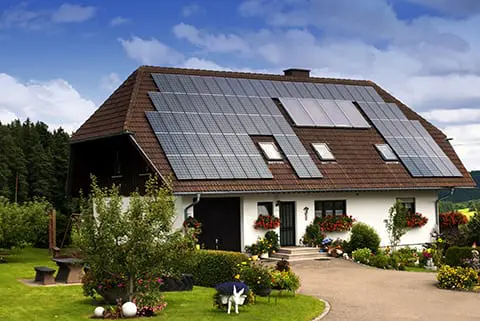
From water use to heating and cooling costs, it’s no secret that buyers want a home that will offer savings on these important features. It’s also no secret that buyers would pay more for a home that comes with lower energy costs.
But agents aren’t always using green features to sell the home.
By using green features — such as HERS scores, LEED and Energy Star ratings, solar panels, etc. — an agent can effectively sell homes — new or used — for more.
Greening the MLS
In June 2015, the Washington, D.C., Multiple Listing Service (MLS) — the Metropolitan Regional Information Systems Inc. (MRIS) — added 14 new fields to its listings database that allow users to list “high-performance” features of a home.
“We realized that, as an MLS, we have a responsibility to our Realtor customers to add these to the listings where appropriate, so agents can take advantage of this,” says Jonathan Hill, vice president of marketing and communications for MRIS.
The fields ask for what kind of rating the home has (what the actual rating is was something that the MRIS was working on incorporating), whether the rating is certified or in progress, categorization on heating and appliances, R-values for insulation on new construction homes and inclusion of other green features such as tankless water heaters, high-efficiency water heaters, dual-flush toilets, solar panels and geothermal heating and cooling.
“There’s an education quotient to this,” Hill says. “Buyers are educating themselves. Homeowners are now learning that the $15,000 to $20,000 they spent on the new heating system is now going to help them recoup their investment.”
Hill says that many buyers are now recognizing that new homes may be the better deal for them since they now understand that while the price for a new home is sometimes higher than a resale, they will save in the long run on energy and maintenance costs.
The MRIS is not the first MLS to incorporate green features into their listings — the Colorado MLS, the Chicago MLS (Midwest Real Estate Data) and the MetroTex Association of Realtors in the Dallas-Fort Worth area are just a few of those that have been including green features in their listings for some time.
The National Association of Realtors (NAR) has made a concerted effort to have more green features included in listings.
How Using Green Can Mean More Green for Agents
“(DC) Realtors haven’t really utilized the fields in listings that include the green features,” says Lenny Kolstad, a senior program associate with the Institute for Market Transformation. Because the Washington, D.C., market has increasingly become more interested in energy efficiency and green features, IMT was interested in finding out if this had an effect on an agent’s bottom line.
A recent IMT study, “Greening the MLS,” found that agents who don’t promote green are indeed leaving money on the table:
Homes that use “green” fields in MRIS to denote high-performance features such as energy-efficient windows have consistently performed better on key market indicators such as sales price than homes without high-performance features listed.
“What we found is that for those homes that were listed as high-performing homes, there is definitely a price difference,” Hill says. “There was no difference in the time on market, but there was a premium on energy-efficient homes.”
When it comes to helping buyers understand the benefits of an energy-efficient or high-performance home, it’s important to first let them know those benefits even exist.
“The first thing to all of this is to flag the inventory as being green,” says Laura Reed Stukel, a Chicago Realtor. “So much time is spent on making a product that is different, and when it comes time to market the home, agents forget to use all of that information as a marketing tool.”
Stukel points at homebuilders such as Pulte, Centex and Del Webb, who have mastered the art of promoting energy efficiency to different buyers. “If you look at entry-level homes, you’ll see that builders really talk about the energy savings. If the homes are geared to retirees and empty nesters, they’ll talk about comfort and safety, and when it’s for seniors, they’ll talk about solar and no-maintenance homes and stress-free lifestyles,” Stukel says.

